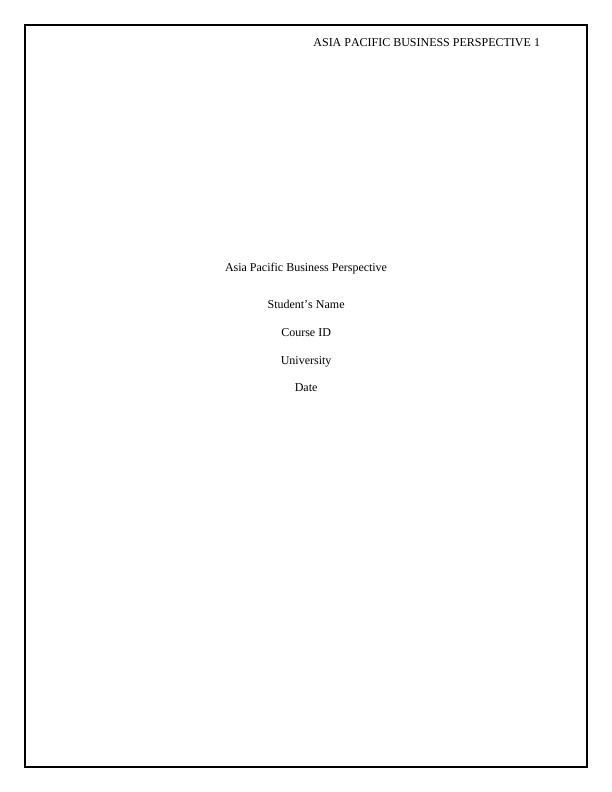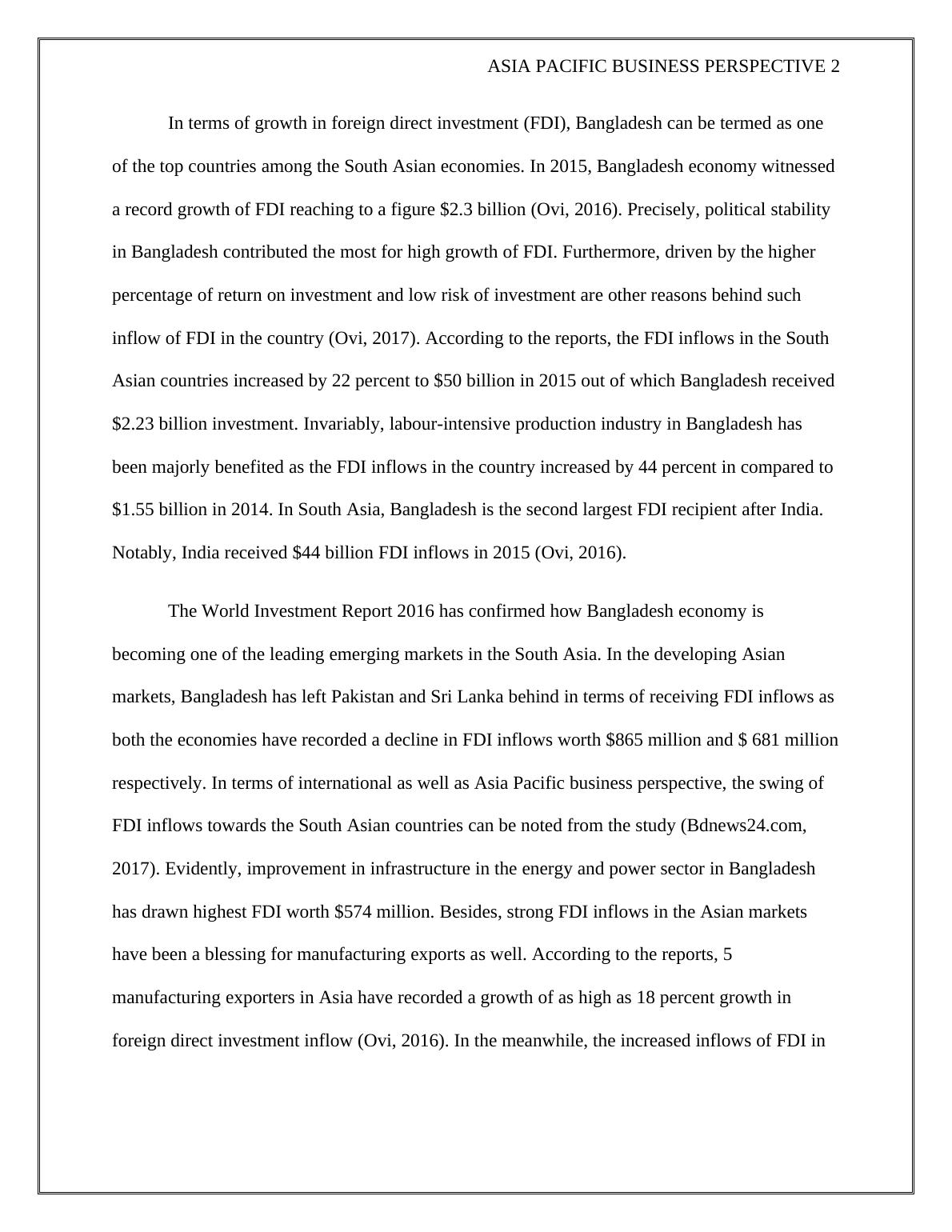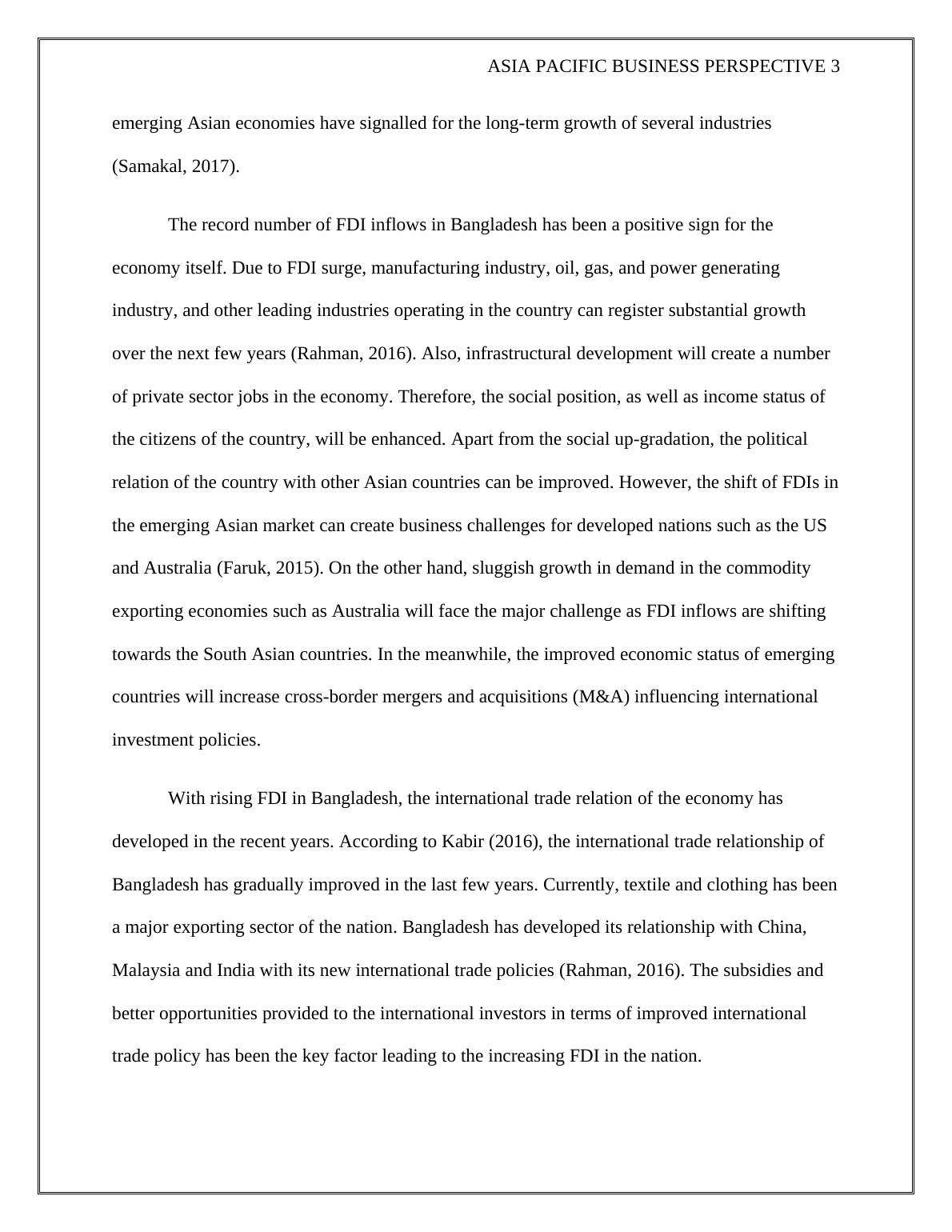Asia Pacific Business Perspective - Assignment - HBI 560
7 Pages1563 Words102 Views
Swinburne University of Technology
Asia Pacific Business Perspective (HBI 560)
Added on 2020-03-02
About This Document
This document talks about FDI foreign direct investment by taking the example of Bangladesh, this report also shows the FDI inflows in the South Asian countries increased by 22 percent to $50 billion in 2015 out of which Bangladesh received $2.23 billion in investment.this developed international trading policy.
Asia Pacific Business Perspective - Assignment - HBI 560
Swinburne University of Technology
Asia Pacific Business Perspective (HBI 560)
Added on 2020-03-02
ShareRelated Documents
End of preview
Want to access all the pages? Upload your documents or become a member.
Foreign Direct Investment in Indonesia
|7
|1396
|38
Foreign Direct Investment Scenario: Bangladesh Perspective
|3
|571
|105
The strategies for economic development
|8
|2399
|18
International Business - Assignment
|7
|1144
|66
Importance of Fiscal and Monetary Policy in UK's Economic Growth
|13
|2168
|66
Political Economy and Sustainable Development of Telstra in Asia Pacific
|10
|3119
|287



